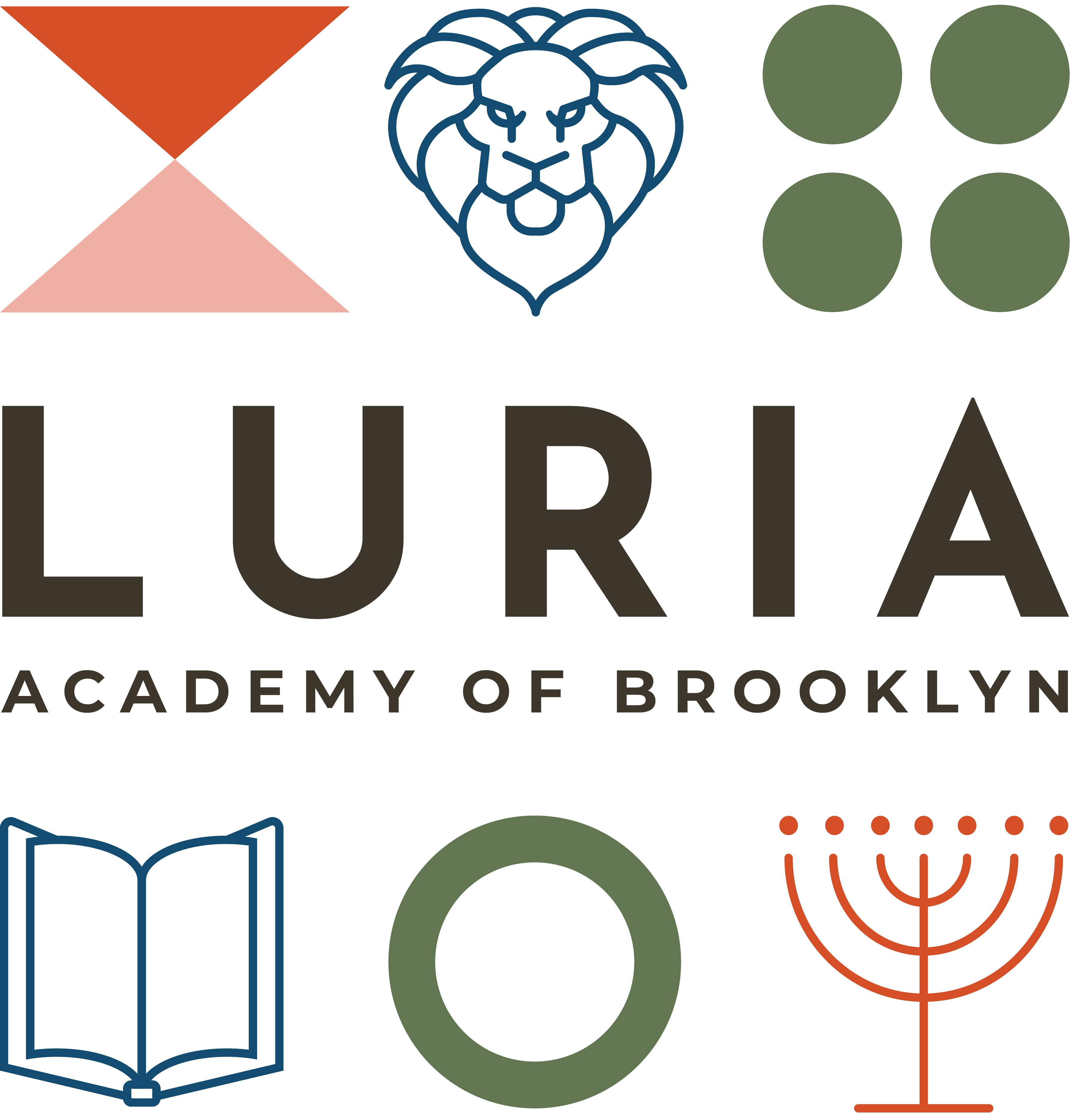Upper School Curriculum
In Upper School, Luria strives to nurture an environment that loves literature and appreciates the nuance of analyzing stories. A methodical teaching approach, which combines Columbia University’s Teachers College with advanced literacy practices, students are pushed to think critically, analyze plot points and characters, synthesize information and draw conclusions. As students’ cognitive skills expand, texts increase in complexity while Common Core goals and skills are continuously revisited. In writing, students learn how to produce clear and coherent writing in which the development, organization, and style are appropriate to task, purpose, and audience. Students also focus on establishing and maintaining a formal style when writing. Middle school has an added literacy focus which is scientific literacy and nonfiction comprehension. Language arts and science teachers work together closely to expand students’ toolbox of strategies for engaging with informative and expository texts.
Luria is aligned with Common Core, which concentrates on a clear set of math skills and concepts. Students are encouraged to solve real-world problems. Math teachers ask students to understand
something, which also means asking a teacher to assess whether the student has understood it. One way for teachers to do this is to ask the student to justify, in a way that is appropriate to the student’s mathematical maturity, why a particular mathematical statement is true or where a mathematical rule comes from. Mathematical understanding and procedural skill are equally important, and both are assessed using mathematical tasks of sufficient richness. All students have opportunities to be appropriately supported and challenged in math instruction. For some students, this means taking Regents courses and the Regents in June, which allows graduates to place into more advanced math in high school.
Science in Luria Middle School is a balanced integration of three dimensions of science learning including science and engineering practices, disciplinary core ideas and crosscutting concepts. Students engage in science and engineering practices to investigate the natural world and design and build systems. These practices apply and deepen the knowledge of the key core ideas in science that have broad application and relevance to the range of science disciplines. Using crosscutting concepts such as cause/effect or structure/function as a foundation for learning, helps students make connections between the various domains of science including physical, life, earth and space science as well as engineering design. Ultimately, within this framework, students invest in their curiosity, develop critical thinking and literacy, and build a view of science as both a body of knowledge and an evidence-based, theory building effort that continually extends, refines, and revises knowledge.
The goal of history and civic education at Luria is that students form a foundation for civic engagement before they encounter their national civic responsibility. In order to develop this, students learn American history from the time of Native Americans through WWII. Students do not learn history as a transmission of information from teacher to student, but rather, with an inquiry-based approach. Students are asked to evaluate historic decisions, read texts through multiple lenses and synthesize information across time periods in order to draw conclusions. As an elective, and in order to develop civic virtues and civic leadership skills, 7th and 8th graders have the opportunity to
participate in a course called Civic Spirit. The goal of Civic Spirit is for every student to graduate from Luria as informed, inspired, and invested in our future.
Children learn to take pride in their Jewish identity. An important component of Jewish pride is that Luria students take part in daily tefilah. Students learn about the purpose of prayer and the meaning
of each specific prayer. They are encouraged to make personal connections to G-d by engaging in pre- and post-prayer discussion questions. Our primary goal for graduating students is for them to achieve optimal proficiency with Judaic texts. We encourage students to think critically and feel comfortable to probe and question these texts. Luria is committed to teaching both Torah and secular disciplines in a rigorous and comprehensive manner that encourages drawing moral insights
and religious guidance from both disciplines.
At Luria, we have created our Chumash curriculum using the TaNaKH Standards and Benchmarks, from the Legacy Heritage Instructional Leadership Institute, operated by JTS. This structure has allowed us to develop a Chumash program that fits the vision and needs of our school. It has also given us the ability to assess our learning outcomes at every step of instruction.
The two overarching Standards of our school are Standard 1 and Standard 4. Standard 1 gives our students access to the text in Hebrew, through grammar, language, and meaning- making skills. The objective of Standard 4 is for our students to develop a personal connection to Torah and come to understand the text as the formative narrative of our people, past, present, and future. In the Upper School, we also include Standard 2, with the objective that the students will be engaged in the learning of ancient, rabbinic, and modern modes of interpretation of the Biblical text and will see themselves as a link in this ongoing chain of interpretation. Each Standard is comprised of a detailed list of Benchmarks -specific learning outcomes- for each grade level. The curriculum is divided into Units of Study for each grade level. Each unit of study, covers a portion of text, about one to two perakim of Chumash.Each unit is built around 3- 5 Benchmarks that align with the content as well as the skill level of the students, and 2-4 Essential Questions and Big Ideas. At the end of each unit of study, the students are given a Performance Assessment with an Engaging Scenario and a Rubric to assess the level at which the students reached the Benchmarks of the unit. The text that is studied in the Upper School is selected from section of Sifrei Bereshit, Shemot and Bamidbar.
The two overarching Standards of our school are Standard 1 and Standard 4. Standard 1 gives our students access to the text in Hebrew, through grammar, language, and meaning- making skills. The objective of Standard 4 is for our students to develop a personal connection to Torah and come to understand the text as the formative narrative of our people, past, present, and future. In the Upper School, we also include Standard 2, with the objective that the students will be engaged in the learning of ancient, rabbinic, and modern modes of interpretation of the Biblical text and will see themselves as a link in this ongoing chain of interpretation. Each Standard is comprised of a detailed list of Benchmarks -specific learning outcomes- for each grade level. The curriculum is divided into Units of Study for each grade level. Each unit of study, covers a portion of text, about one to two perakim of Chumash.Each unit is built around 3- 5 Benchmarks that align with the content as well as the skill level of the students, and 2-4 Essential Questions and Big Ideas. At the end of each unit of study, the students are given a Performance Assessment with an Engaging Scenario and a Rubric to assess the level at which the students reached the Benchmarks of the unit. The text that is studied in the Upper School is selected from section of Sifrei Bereshit, Shemot and Bamidbar.
Our students begin learning about Torah shebe’al peh, the oral tradition, in fourth grade when they engage in an overview of Rabbinic literature and an understanding of the time period and historical context of the second temple period and the Tanaim. Students begin their study of mishnah in fifth grade and continue learning mishna through sixth grade. Students develop the skills needed to understand the mishna in its original, to identify the various components of a mishna, key vocabulary, the form and content, the rhetoric and the dynamic between the Rabbis in the text.
In sixth grade, students continue their mishna learning, while in seventh grade, students are introduced to the Gemara, getting an understanding of the historical time period and context, the lives of the Amoraim, and a strong familiarity with the layout of the text itself- where things fall on the page and within a masekhet. They begin learning sugyot, sections of the text in seventh grade and continue through eight grade. Students learn key vocabulary, sign post terminology, how and when to use various talmudic dictionaries, how to punctuate and break apart the text, all in an effort to develop independent learners of this complex component of the Jewish bookshelf. They learn to ask questions and support their assertions, finding themselves engaging in this ancient tradition. While a major component of the learning experience is developing skills, students are also learning key sugyot that introduce them to halkhic and aggadic texts, foundational stories and arguments that influence who we have become has a people and how we think about the world of the Rabbis and our own Jewish journey.
In sixth grade, students continue their mishna learning, while in seventh grade, students are introduced to the Gemara, getting an understanding of the historical time period and context, the lives of the Amoraim, and a strong familiarity with the layout of the text itself- where things fall on the page and within a masekhet. They begin learning sugyot, sections of the text in seventh grade and continue through eight grade. Students learn key vocabulary, sign post terminology, how and when to use various talmudic dictionaries, how to punctuate and break apart the text, all in an effort to develop independent learners of this complex component of the Jewish bookshelf. They learn to ask questions and support their assertions, finding themselves engaging in this ancient tradition. While a major component of the learning experience is developing skills, students are also learning key sugyot that introduce them to halkhic and aggadic texts, foundational stories and arguments that influence who we have become has a people and how we think about the world of the Rabbis and our own Jewish journey.
Luria’s Middle School Hebrew language curriculum continues the use of a proficiency based approach that builds upon the foundation of our elementary program. Having established strong comprehension and language production skills, we go deeper into writing and reading higher level texts. We prepare students to enter immersive high school environments, or to move on to public school with a strong foundation in Hebrew language. Unit topics are sophisticated and age appropriate for students and often involve research based on student choice. Students are guided and challenged at their own level, whether they have been in a Hebrew speaking environment for 8 years, or they are just beginning in our middle school program.




